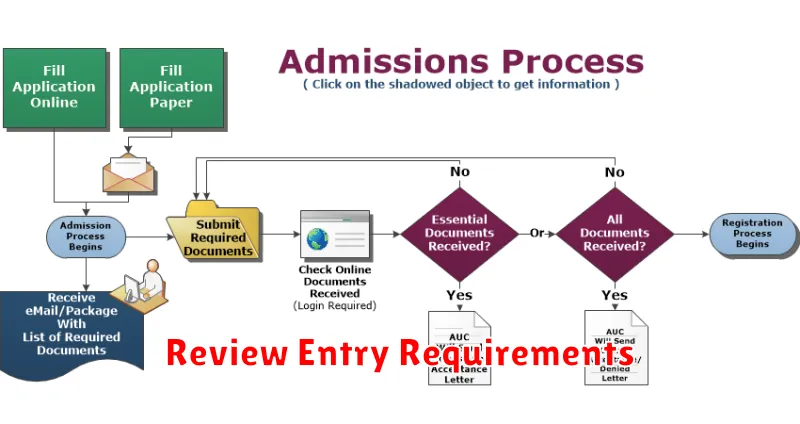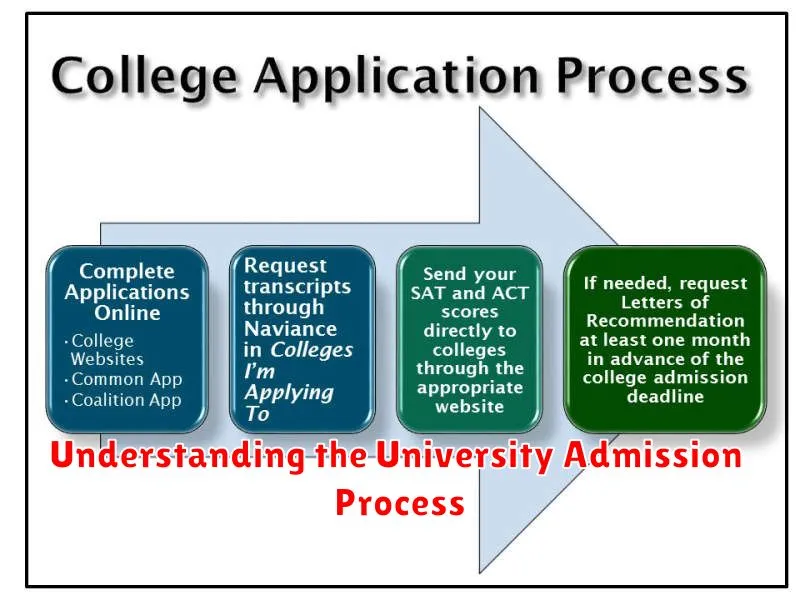Navigating the university admission process can be daunting. This comprehensive guide aims to demystify the complexities of college applications, offering valuable insights into admission requirements, application deadlines, and crucial selection criteria. Whether you’re a high school student beginning your college search or a parent seeking to support your child’s higher education journey, understanding the intricacies of university admissions is essential for success. This article will equip you with the knowledge and resources you need to approach the application process with confidence and maximize your chances of acceptance into your desired university program.
From understanding GPA and SAT/ACT score requirements to crafting a compelling personal statement and securing strong letters of recommendation, this guide will cover all the key aspects of the university admission process. We will explore different application platforms, discuss the importance of extracurricular activities and demonstrated interest, and provide practical tips for managing application fees and financial aid. Gain a thorough understanding of the admission process to make informed decisions and increase your likelihood of receiving that coveted acceptance letter from your dream university.
Choose the Right Program
Selecting the right university program is a crucial step in the admissions process. Careful consideration of your academic interests, career goals, and personal preferences is essential.
Begin by thoroughly researching different programs. Explore program websites, read course descriptions, and look into faculty research interests. Understanding the curriculum is key to ensuring the program aligns with your academic aspirations.
Consider the program structure. Some programs offer more flexibility than others, allowing for specializations or electives. Think about whether you prefer a structured curriculum or a more open approach.
Location and campus environment also play a significant role. Reflect on whether you thrive in a bustling urban setting or a quieter, more rural campus. Consider the size of the university and the overall student community.
Review Entry Requirements

A crucial step in the university application process is thoroughly reviewing the entry requirements for your chosen program. Each university and program will have specific criteria that applicants must meet. Failing to meet these requirements can lead to an automatic rejection, so careful attention is paramount.
Typically, entry requirements encompass several key areas:
- Academic Qualifications: This usually involves submitting transcripts demonstrating successful completion of secondary education. Some programs might require specific subjects or minimum grades. Pay close attention to any prerequisite courses.
- Standardized Tests: Many universities require scores from standardized tests like the SAT or ACT. Check the required minimum scores for your program.
- English Language Proficiency: For international students or those whose native language isn’t English, proof of English proficiency through tests like TOEFL or IELTS is often mandatory.
- Application Materials: This can include letters of recommendation, personal essays, and a completed application form. Adhering to specified formatting and submission guidelines is essential.
Carefully review the university’s website or contact the admissions office directly to obtain the most accurate and up-to-date information on entry requirements for your desired program.
Prepare Transcripts and Certificates
Official transcripts are a crucial part of your university application. They provide a detailed record of your academic performance throughout high school. Request these transcripts from your school’s guidance counselor or registrar well in advance of application deadlines.
In addition to transcripts, you’ll likely need to submit other supporting documents. These might include:
- Diploma or certificate of graduation: Proof of completion of secondary education.
- Standardized test scores (if required): Official reports from testing agencies like the College Board (SAT) or ACT.
- Language proficiency certificates (if applicable): For international students or those applying to programs with specific language requirements.
Ensure all documents are official and sent directly from the issuing institution to the universities you are applying to. Keep copies for your own records.
Understand Application Portals
Application portals are the online platforms universities use to manage the application process. They are your primary interface for submitting required materials, tracking application status, and communicating with the admissions office.
Each university typically has its own unique portal. Familiarize yourself with each portal’s specific requirements and navigation. This includes understanding how to create an account, complete the application form, and upload necessary documents like transcripts and letters of recommendation.
Key features of application portals often include a dashboard to monitor deadlines, a messaging system for communication, and a checklist of required materials. Successfully navigating the application portal is essential for a smooth and organized application process. Be sure to keep your login credentials secure and check the portal regularly for updates and notifications.
Pay Application Fees and Submit
After completing your application, the next crucial step is paying the application fee. Most universities require a non-refundable application fee. The fee amount varies depending on the institution and program you are applying to.
Carefully review the university’s instructions regarding payment methods. Common methods include online payment through credit/debit cards or electronic bank transfers. Ensure you have all necessary information ready to avoid delays.
Once the payment is processed, you can formally submit your application. Verify all details one last time before clicking the submit button. Keep a record of your payment confirmation and submission date. Some universities provide an application portal where you can track your application status.
Prepare for Interviews and Exams
Many universities require both an interview and entrance exams as part of their admissions process. Thorough preparation is key to success in both.
Interviews
The interview allows the university to assess your personality, communication skills, and genuine interest in their programs. Practice answering common interview questions, such as “Why are you interested in this university?” and “What are your strengths and weaknesses?”. Research the university and the specific program you’re applying for to demonstrate your commitment.
Entrance Exams
Entrance exams typically assess your academic aptitude in areas relevant to your chosen field of study. Familiarize yourself with the exam format, content, and time constraints. Utilize practice tests and study materials to identify areas needing improvement. Effective time management during the exam is crucial.
Respond to Offers and Enrollment Steps
Once you receive admission offers, carefully review each one. Compare important factors such as program details, financial aid packages, and campus environment. Deadlines for responding to offers are crucial, so make note of them and adhere strictly to the given timeframe.
After making your decision, formally accept the offer from your chosen university. This usually involves submitting an acceptance form and possibly a deposit to secure your place. Declining offers from other universities is a courteous practice.
Enrollment Steps
After accepting an offer, you’ll begin the enrollment process. This typically includes:
- Course registration: Select your desired courses, paying attention to prerequisites and program requirements.
- Paying tuition and fees: Understand the payment deadlines and available options.
- Orientation: Attend orientation sessions to familiarize yourself with the campus, resources, and academic expectations.
- Placement tests (if applicable): Some programs may require placement tests to assess your skill level in certain areas.

